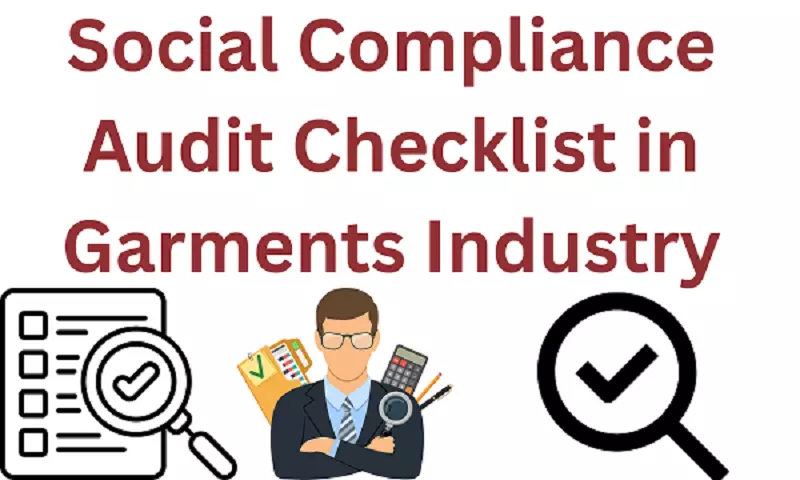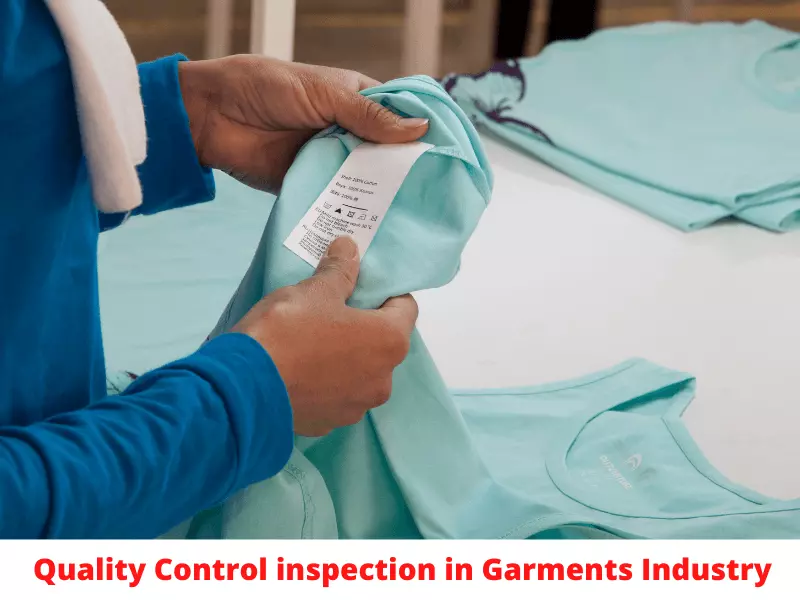Social Compliance Audit Checklist in the Garments Industry
Introduction
In the highly competitive garments industry, social compliance plays a crucial role in ensuring ethical practices and maintaining sustainable business operations. A social compliance audit is an essential tool that helps assess a company’s adherence to various social and labor standards. This article aims to provide a comprehensive checklist for conducting a social compliance audit in the garments industry. By following this checklist, garment manufacturers can uphold ethical standards, promote worker welfare, and strengthen their brand reputation.
Table of Contents
- Introduction
- Understanding Social Compliance
- Importance of Social Compliance in the Garments Industry
- Common Areas of Social Compliance Audit
- Child Labor
- Forced Labor
- Working Conditions
- Health and Safety
- Wages and Benefits
- Working Hours
- Discrimination and Harassment
- Freedom of Association and Collective Bargaining
- Environmental Sustainability
- Steps for Conducting a Social Compliance Audit
- Preparation
- Site Visit and Documentation Review
- Interviews and Worker Engagement
- Observations and Inspections
- Data Analysis and Reporting
- Corrective Actions and Follow-up
- Benefits of Implementing Social Compliance
- Conclusion
- FAQs
Understanding Social Compliance
Social compliance refers to an organization’s commitment to operating in accordance with ethical standards, international labor laws, and human rights. It encompasses various aspects, including labor practices, worker health and safety, environmental sustainability, and fair treatment of employees. By complying with social standards, companies ensure that their operations align with ethical principles and contribute positively to society.
Importance of Social Compliance in the Garments Industry
The garments industry is labor-intensive, employing millions of workers worldwide. Social compliance is crucial in this industry to protect the rights and well-being of workers. By ensuring fair wages, safe working conditions, and the absence of exploitative practices, companies can create a positive work environment and uphold their social responsibilities. Social compliance also helps organizations build trust with customers, investors, and stakeholders, which enhances their brand reputation and competitiveness.

Common Areas of Social Compliance Audit
To conduct a comprehensive social compliance audit in the garments industry, it is essential to assess various aspects of labor practices. The following are the common areas to focus on during an audit:
Child Labor
Child labor is a serious violation of human rights and international labor laws. The audit should verify that no workers below the legal working age are employed and that adequate measures are in place to prevent child labor.
Forced Labor
Forced labor involves coercive practices where workers are compelled to work against their will. The audit should assess whether there are any instances of forced labor within the organization or its supply chain.
Working Conditions
Working conditions play a significant role in the well-being of garment workers. The audit should evaluate factors such as workplace cleanliness, ventilation, lighting, temperature control, and the availability of proper amenities.
Health and Safety
Ensuring a safe and healthy working environment is crucial for worker well-being. The audit should assess the presence of safety protocols, emergency preparedness, availability of personal protective equipment (PPE), and compliance with health and safety regulations.
Wages and Benefits
The audit should verify that workers
receive fair wages and benefits as per industry standards and local regulations. It should also examine the transparency of wage calculations and the implementation of timely and accurate payroll systems.
Working Hours
Long working hours can have detrimental effects on workers’ health and productivity. The audit should assess whether the organization adheres to legal working hour limits, provides adequate rest breaks, and ensures compliance with overtime regulations.
Discrimination and Harassment
The audit should evaluate whether the organization promotes a non-discriminatory and harassment-free workplace. It should examine policies, complaint mechanisms, and training programs aimed at preventing discrimination and harassment.
Freedom of Association and Collective Bargaining
The audit should assess whether workers have the freedom to associate, form labor unions, and engage in collective bargaining. It should examine the organization’s stance on worker representation and dialogue between management and employees.
Environmental Sustainability
Environmental sustainability is an important aspect of social compliance. The audit should evaluate the organization’s environmental practices, waste management systems, energy consumption, and compliance with relevant environmental regulations.
Steps for Conducting a Social Compliance Audit
To conduct a thorough social compliance audit in the garments industry, the following steps should be followed:
Preparation
Before the audit, gather relevant information about the organization, its policies, and industry standards. Develop an audit plan, including the scope, objectives, and audit timeline. Identify the key areas to be assessed and the necessary documentation for review.
Site Visit and Documentation Review
Conduct an on-site visit to the garment manufacturing facilities. Review documents such as policies, procedures, contracts, records, and licenses. Assess the physical conditions of the workplace, including safety equipment, emergency exits, and worker accommodations.
Interviews and Worker Engagement
Interview key personnel, including management representatives, HR personnel, and workers. Engage with workers to understand their experiences, grievances, and perceptions about the work environment. Ensure confidentiality and encourage open communication.
Observations and Inspections
Observe the workplace and assess compliance with social and labor standards. Pay attention to working conditions, safety measures, cleanliness, machinery maintenance, and general adherence to regulations. Document any violations or areas for improvement.
Data Analysis and Reporting
Analyze the collected data, including interviews, documents, and observations. Identify gaps, non-compliance, and areas of strength. Prepare a comprehensive audit report highlighting findings, recommendations, and action plans for improvement.
Corrective Actions and Follow-up
Share the audit report with the organization’s management. Collaborate with them to develop corrective action plans addressing the identified issues. Monitor the implementation of corrective actions and conduct follow-up visits to ensure sustained compliance.
Benefits of Implementing Social Compliance
Implementing social compliance measures in the garments industry offers several benefits, including:
- Enhanced brand reputation: Demonstrating a commitment to ethical practices helps build trust and credibility among customers, leading to a positive brand image.
- Competitive advantage: Socially compliant organizations often have a competitive edge over non-compliant counterparts, attracting socially conscious consumers and business partners.
- Improved worker morale and productivity: By providing fair wages, safe working conditions, and employee welfare programs, organizations can boost worker morale, leading to increased productivity and lower turnover rates.
- Legal compliance: Adhering to social and labor standards ensures legal compliance, reducing the risk of penalties, fines, and legal disputes.
- Ethical responsibility: Implementing social compliance is a reflection of an organization’s commitment to upholding ethical values and respecting human rights.
Conclusion
In the garments industry, social compliance is essential for ethical business practices and worker welfare. Conducting a comprehensive social compliance audit based on the checklist provided ensures adherence to labor standards, promotes a safe and healthy work environment, and contributes to sustainable operations. By implementing social compliance measures, garment manufacturers can build a strong brand reputation.
It’s important to note that this checklist provides a general overview, and specific requirements may vary based on regional regulations and industry standards. Additionally, it’s advisable to consult with legal experts, industry associations, or specialized auditors to ensure the checklist is tailored to your specific context and requirements.
- You may love to read: Daily Compliance and Housekeeping Checklist of the Garments Industry
- Responsibilities of Internal Auditor for Social Compliance in the Garments Industry
- Responsibilities of HR Manager in Garments Industry


